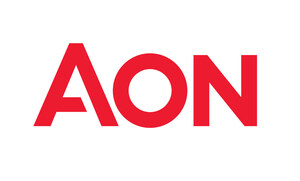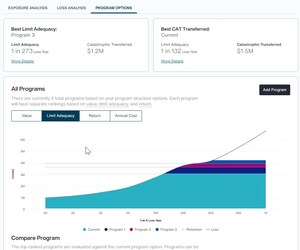LINCOLNSHIRE, Ill., Oct. 3, 2012 /PRNewswire/ -- In 2012, U.S. companies and their employees saw the lowest health care premium rate increases in six years, according to an analysis by Aon Hewitt, the global human resources solutions business of Aon plc (NYSE: AON). The average health care premium rate increase for large employers in 2012 was 4.9 percent, down from 8.5 percent in 2011 and 6.2 percent in 2010. In 2013, however, average health care premium increases are projected to jump up to 6.3 percent.
(Logo: http://photos.prnewswire.com/prnh/20100719/AQ37264LOGO)
Aon Hewitt's analysis showed the average health care cost per employee was $10,522 in 2012, up from $10,034 in 2011. The portion of the total health care premium that employees were asked to contribute toward this premium cost was $2,204 in 2012, compared to $2,090 in 2011. Meanwhile, average employee out-of-pocket costs, such as copayments, coinsurance and deductibles, were $2,200 in 2012, compared to $2,072 in 2011.
For 2013, average health care costs per employee are projected to jump to $11,188. Consistent with the previous two years, employees will be asked to contribute 21 percent of the total health care premium, which equates to $2,385 for 2013. Average employee out-of-pocket costs are expected to increase to $2,429. These projections mean that over the last five years, employees' share of health care costs—including employee contributions and out-of-pocket costs—will have increased more than 50 percent from $3,199 in 2008 to $4,814 in 2013.
"In 2010, employers found themselves in a challenging budgetary position, thus taking more aggressive actions with their benefit plans. An expected decline in employment levels and new costs resulting from health care reform had to be factored into expected costs, which led many employers and insurers to conservatively project their health care premiums for 2011," said Tim Nimmer, fellow to the Society of Actuaries, member of the American Academy of Actuaries and chief health care actuary at Aon Hewitt. "As actual results materialized, employers have seen some stabilization in employment levels, less severe impact of high cost claims, a general movement towards consumer-driven plans and greater clarity around the average cost impact associated with health care reform. As a result, 2012 premiums were offset to reflect the better than expected historical experience. For 2013, we expect premium increases to gravitate back to the 6 percent range."
Costs by Plan Type
On average, Aon Hewitt forecasts that companies will see 2013 cost increases of 7.0 percent for health maintenance organization plans (HMOs), 6.1 percent for preferred provider organizations (PPOs) and 6.1 percent for point-of-service (POS). That means from 2012 to 2013, the average cost per person for major companies is estimated to increase from $10,659 to $11,405 for HMOs, $10,433 to $11,069 for PPOs and $11,062 to $11,737 for POS plans.
2012 Cost Increases by Major Metropolitan Area
In 2012, major U.S. markets that experienced rate increases higher than the national average included San Antonio (7.4 percent), San Francisco/Oakland/San Jose (7.4 percent), Los Angeles (7.2 percent) and Austin (6.5 percent). Conversely, Dallas (3.4 percent), Cincinnati (3.6 percent), Denver (4.5 percent), New York City (4.5 percent), Washington, D.C. (4.7 percent) and Philadelphia (4.9 percent) experienced lower-than-average rate increases in 2012.
Employer Action to Mitigate Trend
As the health care landscape shifts, employers are taking the opportunity to reassess their role as a health care benefits provider and subsidizer, while redefining their role in the health, safety and performance of their workforce. According to a recent Aon Hewitt survey of nearly 2,000 U.S. employers representing over 20 million U.S. employees and their dependents, most employers plan to continue sponsoring a medical plan for their employees. However, they are migrating from a traditional "managed trend" approach to a "house money/house rules" approach that is more requiring of employees and integrates a pay-for-performance philosophy into their benefit programs. This strategy includes elements of:
- Wellness and health programs that aim to improve the health of employees, reducing the amount and cost of care required, while minimizing work days missed due to illness. Aon Hewitt's survey shows a growing number of employers are offering incentives and are beginning to link incentives to a result, as opposed to simply participating in a program. In other cases, employers may require a health risk questionnaire, biometric screening and/or ongoing health coaching in order to be eligible for the richest plan or the highest employer subsidy.
- Consumer-driven designs that expose employees to the direct cost of care up to a limit, encouraging more personal economic decisions about how to access care, how much care to use and what types of care to use. Aon Hewitt's survey found that consumer-driven health plans have become the second most common plan design offered by U.S. employers, with 58 percent of employers offering a CDHP in 2012.
- Plan design strategies that encourage employees to consume less health care. Examples are plans that replace copays with coinsurance, migrate employees to generic prescription drugs and mail order refills for maintenance drugs, and levy surcharges for working spouses or additional dependents with coverage available elsewhere.
While still an emerging trend, a growing number of employers are interested in a corporate health care exchange model, which enables employers to manage the growth of their subsidy and allows employees to select from a greater set of health plan alternatives. Aon Hewitt's research finds that more than 40 percent of employers are considering moving to a corporate health care exchange model in the next three-to-five years. For example, more than 100,000 U.S. employees are enrolling in health benefits through Aon Hewitt's fully insured, multicarrier corporate health care exchange this fall.
"Most employers want to continue to offer benefits, but face financial pressure to achieve a meaningfully different cost outcome," noted Jim Winkler, chief innovation officer for Health & Benefits at Aon Hewitt. "Employers will either need to more aggressively manage traditional programs by finding ways to reduce demand for health care and reforming the provider system or move in the other direction—towards a defined contribution approach that places accountability on individual employees."
Sign up for News Alerts: http://aon.mediaroom.com/index.php?s=58
Follow Aon Hewitt on Twitter @AonHewitt
About the Data
Aon Hewitt's data is derived from the Aon Hewitt Health Value Initiative database, which captures health care cost and benefit data for 466 large U.S. employers representing 14.9 million participants, more than 1,200 plans and $63.1 billion in 2012 health care spending.
About Aon Hewitt
Aon Hewitt is the global leader in human resource solutions. The company partners with organizations to solve their most complex benefits, talent and related financial challenges, and improve business performance. Aon Hewitt designs, implements, communicates and administers a wide range of human capital, retirement, investment management, health care, compensation and talent management strategies. With more than 29,000 professionals in 90 countries, Aon Hewitt makes the world a better place to work for clients and their employees. For more information on Aon Hewitt, please visit www.aonhewitt.com.
About Aon
Aon plc (NYSE:AON) is the leading global provider of risk management, insurance and reinsurance brokerage, and human resource solutions and outsourcing services. Through its more than 62,000 colleagues worldwide, Aon unites to empower results for clients in over 120 countries via innovative and effective risk and people solutions and through industry-leading global resources and technical expertise. Aon has been named repeatedly as the world's best broker, best insurance intermediary, reinsurance intermediary, captives manager and best employee benefits consulting firm by multiple industry sources. Visit www.aon.com for more information on Aon and www.aon.com/manchesterunited to learn about Aon's global partnership and shirt sponsorship with Manchester United.
Media Contacts:
Maurissa Kanter, 847-442-0952, [email protected]
MacKenzie Lucas, 847-442-2995, [email protected]
SOURCE Aon plc
WANT YOUR COMPANY'S NEWS FEATURED ON PRNEWSWIRE.COM?
Newsrooms &
Influencers
Digital Media
Outlets
Journalists
Opted In






Share this article